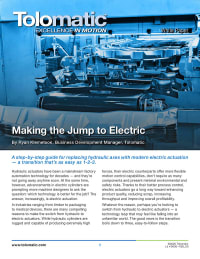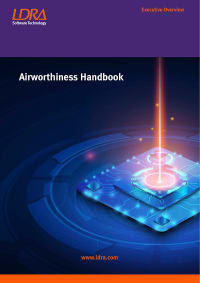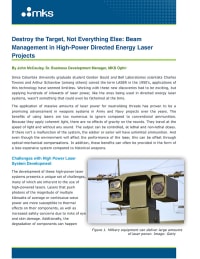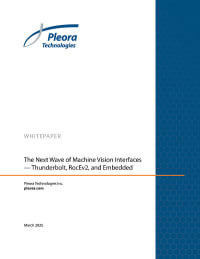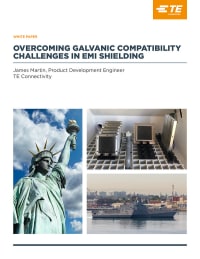Briefs: Energy
Read on to learn about research that raises the benchmark for sodium-based all-solid-state batteries and demonstrates thick cathodes that retain performance at room temperature down to subzero conditions.
Briefs: Materials
By flipping a foundational belief in battery design, Hailong Chen and his team found that charging zinc-ion batteries at higher currents can make them last longer. Read on to learn more about this surprising result.
Products: Materials
See the new products, including Plasmatreat's HydroPlasma, a solution for the removal of stubborn contaminants from glass and metal surfaces; TDK Corporation's 3000-watt TDK-Lambda brand HWS3000G programmable AC-DC power supplies; Zircotec's new range of proprietary ceramic coatings; Thermo Fisher Scientific's expanded solutions for battery manufacturers; and more.
Articles: Robotics, Automation & Control
Battery packs are becoming larger and heavier, particularly in applications such as electric trucks, aviation and renewable energy storage. As payload requirements increase, manufacturers are turning to advanced automation and material handling systems to keep pace. Read on to learn what this means.
Articles: Robotics, Automation & Control
Without integrated vision, robots can only perform tasks in precisely the same way every time. If a part is even slightly out of position or rotated differently, the robot may fail to complete its task, or worse, cause an error in the process. Read on to learn more.
Application Briefs: Robotics, Automation & Control
Finland-based Metos Oy, a manufacturer of professional stainless steel kitchen equipment, needed a welding solution that could deliver flawless, pressure-rated welds for small batches of high-spec products, which feature tubular structures and circular shafts that required continuous, precision welding. Read on to find out what they did.
Briefs: Robotics, Automation & Control
Missions to the moon and other planets will require large-scale infrastructure that would benefit from autonomous assembly by robots without on-site human intervention. NASA Ames Research Center has developed a novel and efficient mobile bipedal robot system to construct low-mass, high precision, and largescale infrastructure. Read on to learn more.
Briefs: Design
A team of UC Berkeley-led researchers has developed an AI-driven framework to optimize and automate the design of complex truss robots. This approach enables designers to create robots with extraordinary capabilities while maximizing control efficiency. Read on to learn more about it.
Briefs: Robotics, Automation & Control
Mechanical engineering researchers in the Harvard John A. Paulson School of Engineering and Applied Sciences think there’s another way to design robots: Programming intended functions directly into a robot’s physical structure, allowing the robot to react to its surroundings without the need for extensive on-board electronics. Read on to learn more.
Briefs: Power
Researchers at the University of California San Diego have developed a soft robotic skin that enables vine robots that are just a few millimeters wide to navigate convoluted paths and fragile environments. Read on to learn more.
Briefs: AR/AI
Robots may soon have a new way to communicate with people. Not through words or screens, but with light and images projected directly onto the world around them. University of South Florida's Zhao Han is developing technology that could transform how people interact with robots in both emergencies and everyday life. Read on to learn more.
Products: Information Technology
See the new products, including NVIDIA's IGX Thor, an industrial-grade platform built to bring real-time physical AI directly to the edge; Teknic's precision planetary gearboxes; PI's L-220 series linear actuators; Compact Click dev tool from MIKROE; and more.
Articles: Software
The future of industrial autonomy will not be defined by systems that operate as opaque black boxes, but by approaches that deliberately embed the expertise of the people who know the processes best. Machine teaching makes this possible by making the skills and strategies of expert operators the foundation of AI system design. Read on to learn more.
Articles: Mechanical & Fluid Systems
While growing up, many of us were fascinated by watching gears turning, whether in bicycles, clocks or garbage trucks packing trash on the old rear-load machines. Today, gearing systems play a crucial role in machinery, transmitting power efficiently and reliably across a wide range of applications. Read on to learn more.
Articles: Software
Through a combination of modeling, simulation, and machine learning (ML), USM researchers are laying the groundwork for intelligent uncrewed underwater vehicles (UUVs) capable of autonomously and accurately revealing what lies beneath the waves. Read on to learn more.
Articles: Test & Measurement
The micro-vibration test instrument gives the ESA a high confidence that a satellite’s mechanisms in space will generate verified forces and torques as displayed and confirmed on the micro-vibration test instrument on Earth. Read on to learn more about it.
Briefs: Photonics/Optics
Optics researchers in the Harvard John A. Paulson School of Engineering and Applied Sciences created specially designed metasurfaces — flat devices etched with nanoscale light-manipulating patterns — to act as ultra-thin upgrades for quantum-optical chips and setups. Read on to learn more.
Briefs: Imaging
Innovators at NASA Johnson Space Center have developed a technology that can isolate a single direction of tensile strain in biaxially woven material. This is accomplished using traditional digital image correlation (DIC) techniques in combination with custom red-green-blue (RGB) color filtering software. Read on to learn more.
Briefs: Photonics/Optics
NASA's Glenn Research Center has developed a method of using entangled-photon pairs to produce highly secure mobile communications that require mere milliwatts of power. Read on to learn more.
Briefs: RF & Microwave Electronics
NASA Goddard Space Flight Center has developed a Space Qualified Rover LiDAR (SQRLi) system that will improve rover sensing capabilities in a small, lightweight package. The new SQRLi package is developed to survive the hazardous space environment and provide valuable image data during planetary and lunar rover exploration. Read on to learn more about it.
Briefs: RF & Microwave Electronics
Researchers from Sandia National Laboratories and Ohio State University are taking experimental navigation technology to the skies, pioneering a backup system to keep an airplane on course when it cannot rely on global positioning system satellites. Read on to learn more.
Briefs: Semiconductors & ICs
Cornell researchers have developed a low-power microchip they call a “microwave brain,” the first processor to compute on both ultrafast data signals and wireless communication signals by harnessing the physics of microwaves. Read on to learn more about it.
Briefs: Communications
Researchers have successfully demonstrated the U.K.’s first long-distance ultra-secure transfer of data over a quantum communications network, including the U.K.’s first long-distance quantum-secured video call. Read on to learn more.
Briefs: Medical
A collaborative multidisciplinary team of researchers from the Perelman School of Medicine at the University of Pennsylvania and the Tandon School of Engineering at New York University has developed a miniature device that could transform how blood cancer treatments are tested and tailored for patients. Read on to learn more.
Briefs: Medical
Researchers from RMIT University have developed a wearable wound monitoring device with integrated sensors that could reduce infection risks by minimizing the need for frequent physical contact. Read on to learn more about it.
Briefs: Medical
NASA Johnson Space Center has developed the Micro-Organ Device (MOD) platform technology that serves as a drug screening system with human or animal cell micro-organs to supplement and reduce animal studies while potentially increasing the success of clinical trials. Read on to learn more.
Briefs: Manufacturing & Prototyping
NASA has developed a novel approach for macroscale biomaterial production by combining synthetic biology with 3D printing. This innovation provides modern design and fabrication techniques for custom-designed organic or organic-inorganic composite biomaterials produced from limited resources. Read on to learn more.
Briefs: Software
Researchers have created a simulation model to analyze how coastal management activities meant to protect barrier islands from sea-level rise can disrupt the natural processes that are keeping barrier islands above water. Read on to learn more about it.
Briefs: Energy
As countries race to expand renewable energy infrastructure, balancing clean electricity production with land use for food remains a pressing challenge — especially in Japan, where mountainous terrain limits space. A recent study led by researchers from the University of Tokyo explores a promising solution: integrating solar panels with traditional rice farming in a practice known as agrivoltaics. Read on to learn more.






